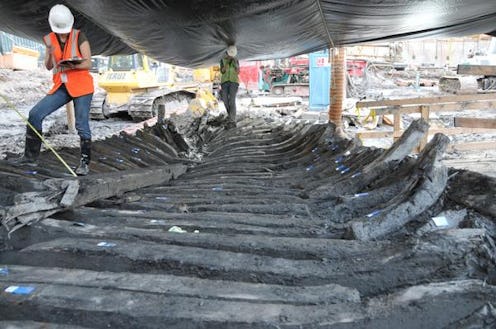News
The Bizarre Case Of The Long-Buried NYC Ship
As construction workers at the World Trade Center location in Manhattan worked to rebuild the site in 2010, they discovered something 22 feet under the ground, to the south of where the Twin Towers were erected — an old, wooden sail boat. It took a few years, but researchers figured out that the wood used to build the ship dates back to 1773. Based on the tree rings found in the wood used, researchers say white oak trees were used to make the ship near Philadelphia. What's more, the same type of trees were used to construct parts of Independence Hall, too.
After the 32-foot-long piece of the old ship was excavated, a couple of laboratories were asked to examine the wood, and figure out where the ship came from, including the Maryland Archaeological Conservation Laboratory and the Tree Ring Laboratory at Columbia University. It was the Columbia research team that determined the ship dates back to the late 1700s, just a few years before the U.S. established its independence from Britain.
It's amazing that researchers can figure out the origin of a wooden ship based on the rings found in the lumber used to build it. But that's exactly what study leader Dario Martin-Benito and his team did, and it all comes down to climate.
Martin-Benito and co saw that part of the ship was made of hickory, which, in the United States, is only found in the east.
Therefore, they narrowed down their search for oak trees in eastern United States, and ended up finding the best match with samples of old wood, including one from Independence Hall, and old living trees near Philadelphia. Pretty cool, huh?
Although historians don't know whether the ship sank on purpose or by accident, it was eventually covered by trash and landfill, and became a permanent piece of the coastline. Oysters were found in the ship's hull, which means the vessel was afloat for sometime before it was buried into the coastline. Additional research into the ship suggests that it was damaged by Lyrodus pedicellatus, which is a "shipworm" often found in warm, salty waters. That means the ship perhaps traveled to the Caribbean at one time. Martin-Benito says that the shipworm would also explain why the ship only sailed for about 20 to 30 years.
